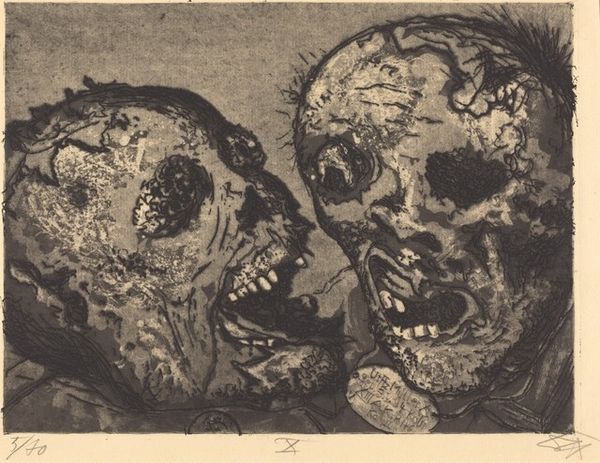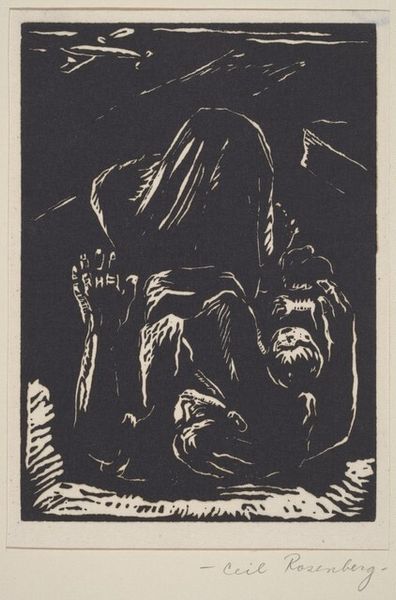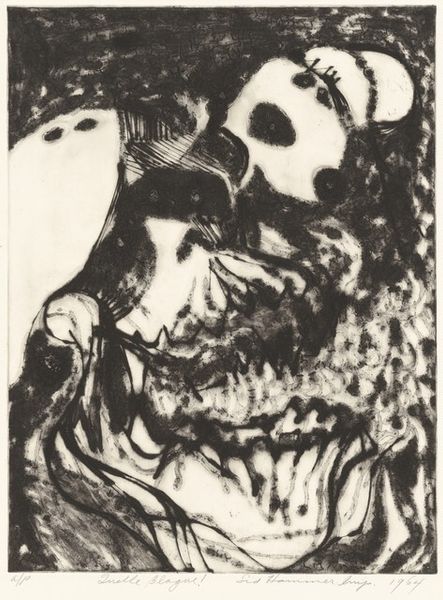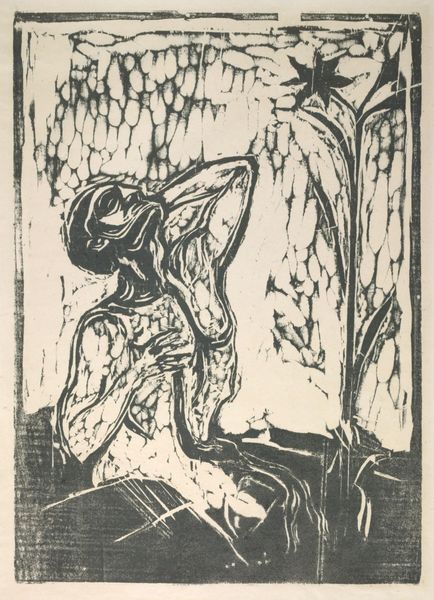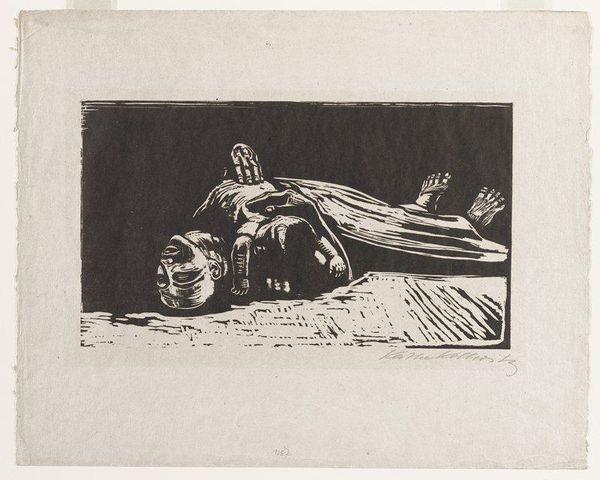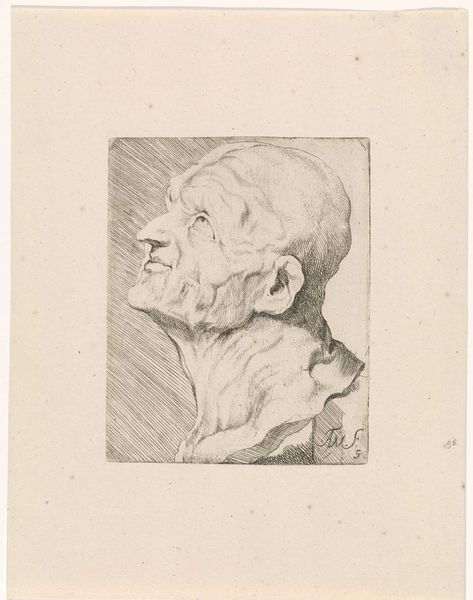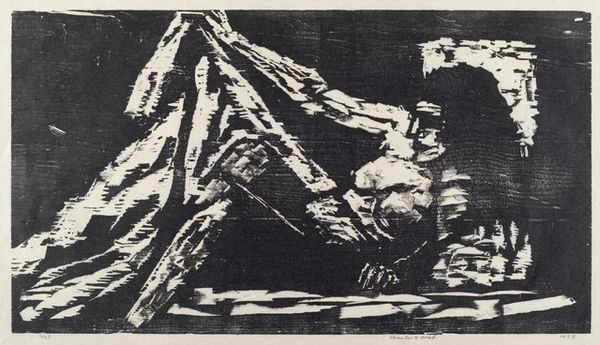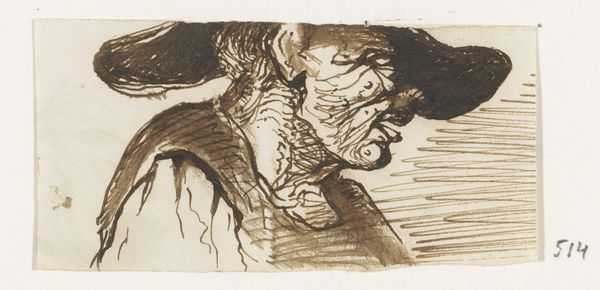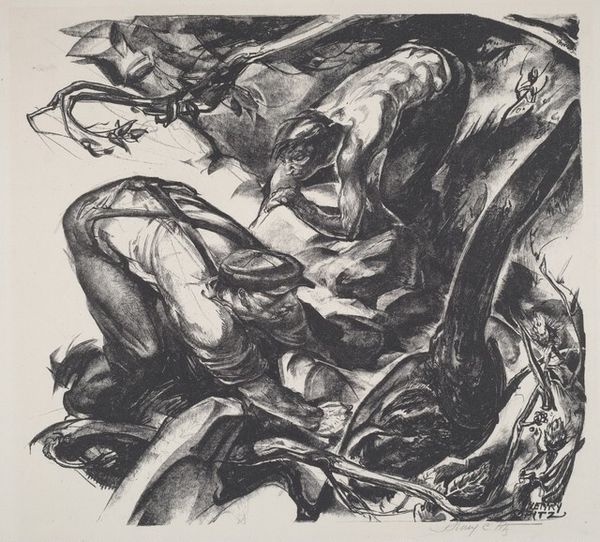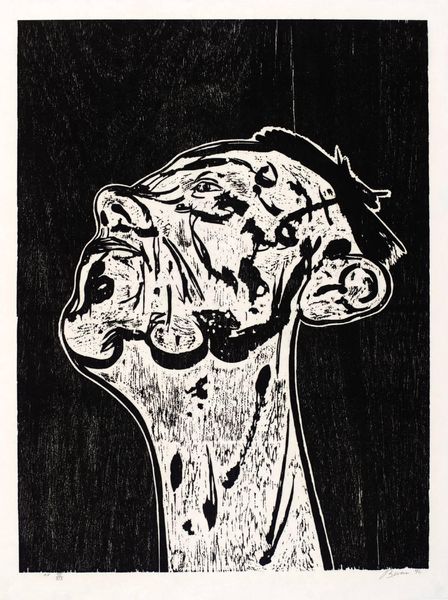
Dimensions: image: 36.2 × 63.5 cm (14 1/4 × 25 in.)
Copyright: National Gallery of Art: CC0 1.0
Leonard Baskin created this woodcut print titled ‘Mantegna at Eremitani’ sometime in the 20th century. Baskin’s title points us to the Ovetari Chapel in the church of Eremitani in Padua, Italy. This chapel was decorated by Andrea Mantegna with a cycle of frescoes completed around 1456. Mantegna’s frescoes are widely regarded as a pivotal moment in Renaissance art. They were, however, almost entirely destroyed by Allied bombing during the Second World War. Baskin’s work is a response to this cultural catastrophe. In this print, Baskin references the Renaissance by way of his own present. The image appears to be in the style of an old master print, but the extreme distortion of the features evokes the angst-ridden figuration of the post-war period. Is Baskin suggesting that all we can hope for is a fragmented recovery of the past? To interpret the meaning of this print, it is important to understand the history of its production and reception, and the ways in which it reflects the social and political concerns of its time.
Comments
No comments
Be the first to comment and join the conversation on the ultimate creative platform.
